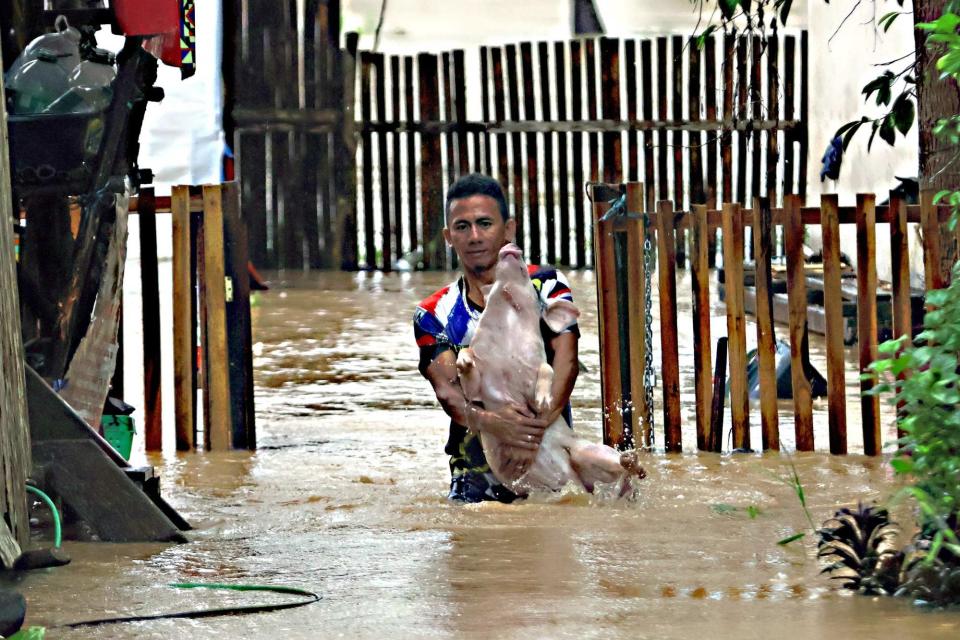Vietnam, Philippines, other Asia-Pacific sovereigns face credit downgrades from flood risk if they fail to adapt: Fitch
Countries in south and southeast Asia are the most exposed to flooding risks in the Asia-Pacific region, and sovereigns with a lower capacity to adapt are likely to face negative rating pressure, according to Fitch Ratings.
Flooding, one of the most common types of natural disaster, could lead to significant economic losses and degraded ratings for some Asia-Pacific sovereigns, the company said in a report on Thursday.
"Sovereigns more vulnerable to physical risks, with weak adaptation capacity, are likely to be under negative rating pressure," the report said. "This puts many sovereigns in south and southeast Asia at risk of negative rating action, with Singapore as the exception."
Do you have questions about the biggest topics and trends from around the world? Get the answers with SCMP Knowledge, our new platform of curated content with explainers, FAQs, analyses and infographics brought to you by our award-winning team.
Most southeast Asian countries are island economies or have long coastlines, leaving them highly exposed to coastal flooding, according to the report. Sea levels have been rising in southeast Asia for several decades, leaving low-lying economies in the region vulnerable to coastal flooding and putting ecosystems that are built around water at risk.

A resident evacuates a pig amid flooding from heavy rains brough by Tropical Storm Jelawat in Prosperidad, Agusan del Sur province, the Philippines, on December 18, 2023. Photo: AFP alt=A resident evacuates a pig amid flooding from heavy rains brough by Tropical Storm Jelawat in Prosperidad, Agusan del Sur province, the Philippines, on December 18, 2023. Photo: AFP>
Sea levels in the Philippines have risen by between 5.7mm and 7mm per year in some areas, double the global average from 1951 to 2015, according to the World Bank's climate and development report for the country.
"Sovereigns in southeast Asia are highly exposed to physical risks from climate change," said Sagarika Chandra, director of Asia-Pacific sovereigns at Fitch Ratings in the report. "Flooding in particular is a key vulnerability for those sovereigns."
Vietnam is the most at risk of flooding in southeast Asia, according to the report, citing data from the Index for Risk Management, a collaboration of the United Nation's Inter-Agency Standing Committee Reference Group on Risk, Early Warning and Preparedness and the European Commission.
Apart from being prone to coastal flooding, Vietnam is also among the most exposed to river flooding due to a multitude of river systems that run across the country. Both Ho Chi Minh City and Hanoi are located near highly flood-prone deltas, of the Mekong River and Red River, respectively.
The Philippines is one of the most exposed to risks from storms such as tropical cyclones in southeast Asia.
In south Asia, Bangladesh is the most prone to flooding, which can be attributed to the country's large rivers and low average elevation of just a few metres above sea level, according to the database of the Index for Risk Management.
"We expect high economic growth in most of south and southeast Asia, with increasing urbanisation, which means their populations' vulnerability to flooding risks is likely to increase," the report said.
"International financing for adaptation and green transition purposes may help fill funding gaps for some sovereigns at the margins, but this is likely to be a small portion of overall funding needs."
Vietnam has received funding of about US$146 million for projects through the Green Climate Fund, the world's largest climate fund established by the United Nations Framework Convention on Climate Change in 2010 which aims at supporting developing countries in meeting their targets towards lower emissions and building greater climate resilience.
The Philippines has received US$137.7 million in funding, while Indonesia has received US$496.7 million and Bangladesh US$441.2 million.
This article originally appeared in the South China Morning Post (SCMP), the most authoritative voice reporting on China and Asia for more than a century. For more SCMP stories, please explore the SCMP app or visit the SCMP's Facebook and Twitter pages. Copyright © 2024 South China Morning Post Publishers Ltd. All rights reserved.
Copyright (c) 2024. South China Morning Post Publishers Ltd. All rights reserved.

 Yahoo Finance
Yahoo Finance 